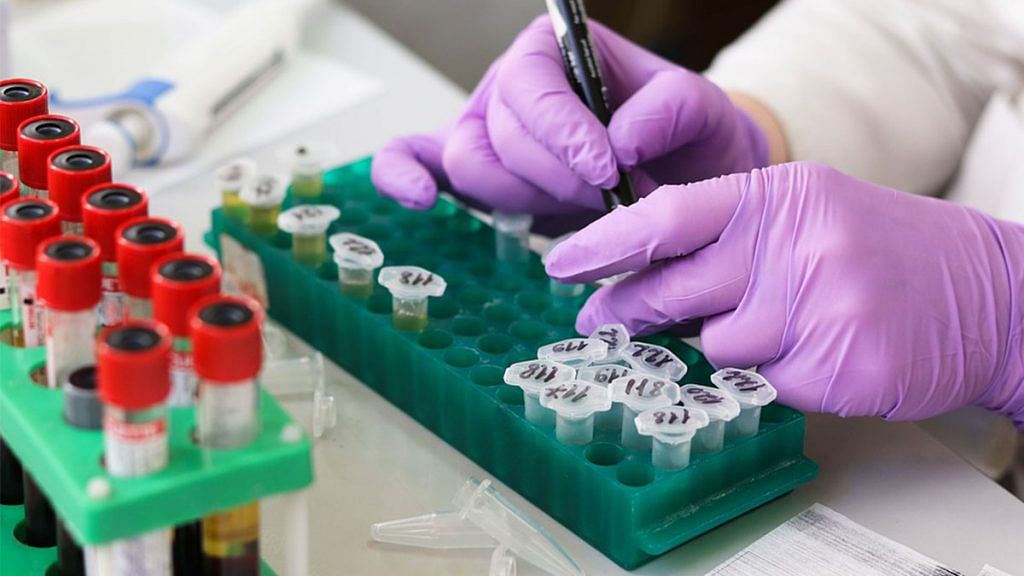New Delhi: From lack of social acceptance, not being ‘likeable’ to socio-economic setbacks — it is particularly hard for Indian women to enter and make a mark in the country’s scientific community.
As the world celebrates International Day of Women and Girls in Science Thursday, senior women scientists in India said the country has a long way to go in terms of gender representation in this field.
They highlighted that while more women can now be been in leadership positions in science, many are often not recognised for their work.
For instance, they pointed out, of the 69 scientists who have received the Infosys Prize — one of the highest monetary awards in India that recognise scientific research — only 16 have been women.
Sanghamitra Bandyopadhyay, director of the Indian Statistical Institute in Kolkata who won the Infosys Prize in 2017, said there has not been a dramatic increase of women in computer sciences, engineering, mathematics and statistics at the research scholar or a higher level since she joined the institute as faculty in 1999.
“Nevertheless, where I am seeing a large growth is in the number of women in high positions,” Bandyopadhyay said.
And this change has been witnessed in the past few years.
Chandrima Shaha became the first woman to be the president of the Indian National Science Academy (INSA) in 2020. Renu Swarup, Secretary, Department of Biotechnology, Ministry of Science and Technology, is another example of women in prominent leadership positions in the fields of sciences.
In fact, Bandyopadhyay is the first director of ISI since its founder Prasanta Chandra Mahalanobis to be appointed for a second term.
A long way to go
Many women scientists noted that things have changed in the past decade or so but there is still more that needs to be done.
Manjula Reddy, chief scientist at Center for Cellular and Molecular Biology in Hyderabad, who won the Infosys Prize in 2019 under the Life Sciences category, said there have been a lot of positive changes in the last 30 years regarding the involvement of women in science.
“More and more women are opting for science and there is general acceptance in the society and in families for women to take up science,” Reddy told ThePrint.
“I am fairly certain that in the next decade we will see more women opting to take up careers of their choice including taking up science and other allied subjects,” she added.
Meanwhile, Shubha Tole, a professor at Tata Institute of Fundamental Research in Mumbai, who won the Infosys Prize in 2014, told ThePrint that while India has inched ahead with a few important steps, the country is “overall far from what could have been achieved”.
“The number of women in leadership positions is still less than a handful. Even the few that have been appointed as directors or presidents have found it difficult to effect change,” Tole said.
She added that the inertia of the pervading “sexist mindset” is hard to overcome, prevailing even among the senior leadership of academia.
Hurdles faced by women scientists
One of the biggest and bizarre hurdles that women face in the Indian scientific community is that they have to be perceived as ‘likeable’.
“A woman is more accepted if she is not assertive, does not speak up and offer opposing opinions, and in general doesn’t rock the boat. These norms are reinforced by both men as well as women who happen to fit within them and who then unconsciously raise barriers for women who don’t,” said Tole.
Many women are unable to even make it to these institutions or universities because of a lack of funds and opportunities.
According to Bandyopadhyay, the lack of security and safety of the cities and towns limits the options and opportunities for girls to a large extent.
Families, especially those from lower income backgrounds, don’t send their daughters for tuitions or coaching to faraway places at odd hours, she noted.
She also pointed to an education system steeped in sexism.
“More often than not, in children’s books, a doctor will be a man, a nurse will be a woman, a pilot will be a man, a person helping in household chores will be a woman,” Bandyopadhyay said.
“Teachers unconsciously impose gender biases about what a boy should and should not do, and about what a girl should or should not do. A girl’s questions are often suppressed from a young age, leading to a reduction of her confidence level,” she added.
For Reddy, women scientists find it difficult to achieve work-life balance, especially in the child-bearing and rearing years. And the system in place does not have the provisions to accommodate their needs.
“Women are expected to contribute equally (if not more) to the work-productivity during these years and many women tend to opt for a less stressful family life than a career in science,” Reddy said.
However, with appropriate support systems in place, she added, this hurdle can be overcome.
“If more girls come into academia, then there is increased opportunity for women entering into the leadership positions and then the cycle continues. With more women working, support systems will also evolve slowly such as good childcare facilities that are totally lacking in India now and flexible work hours etc,” she told ThePrint.
With inputs from Sandhya Ramesh
